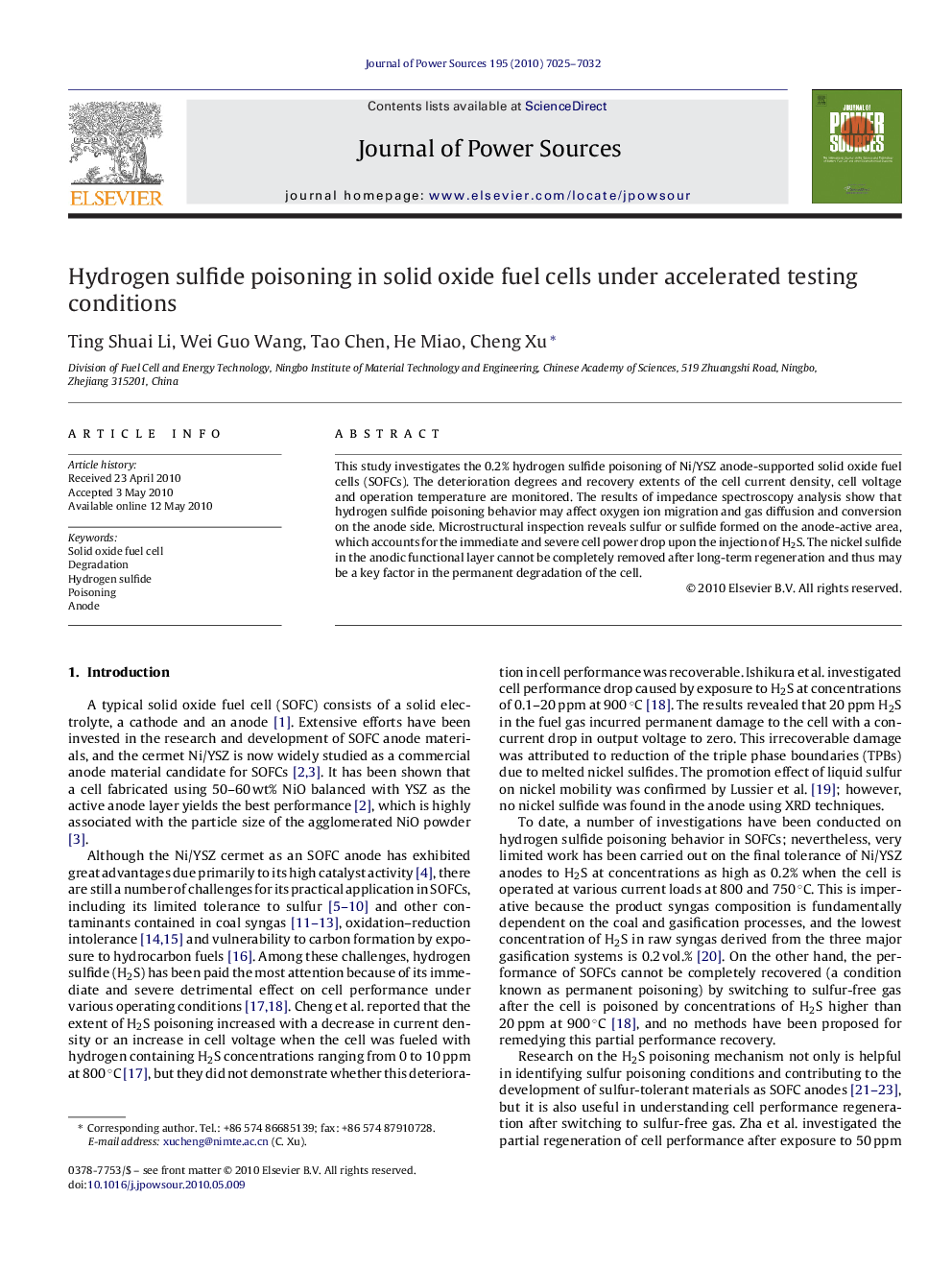| Article ID | Journal | Published Year | Pages | File Type |
|---|---|---|---|---|
| 1289210 | Journal of Power Sources | 2010 | 8 Pages |
This study investigates the 0.2% hydrogen sulfide poisoning of Ni/YSZ anode-supported solid oxide fuel cells (SOFCs). The deterioration degrees and recovery extents of the cell current density, cell voltage and operation temperature are monitored. The results of impedance spectroscopy analysis show that hydrogen sulfide poisoning behavior may affect oxygen ion migration and gas diffusion and conversion on the anode side. Microstructural inspection reveals sulfur or sulfide formed on the anode-active area, which accounts for the immediate and severe cell power drop upon the injection of H2S. The nickel sulfide in the anodic functional layer cannot be completely removed after long-term regeneration and thus may be a key factor in the permanent degradation of the cell.
